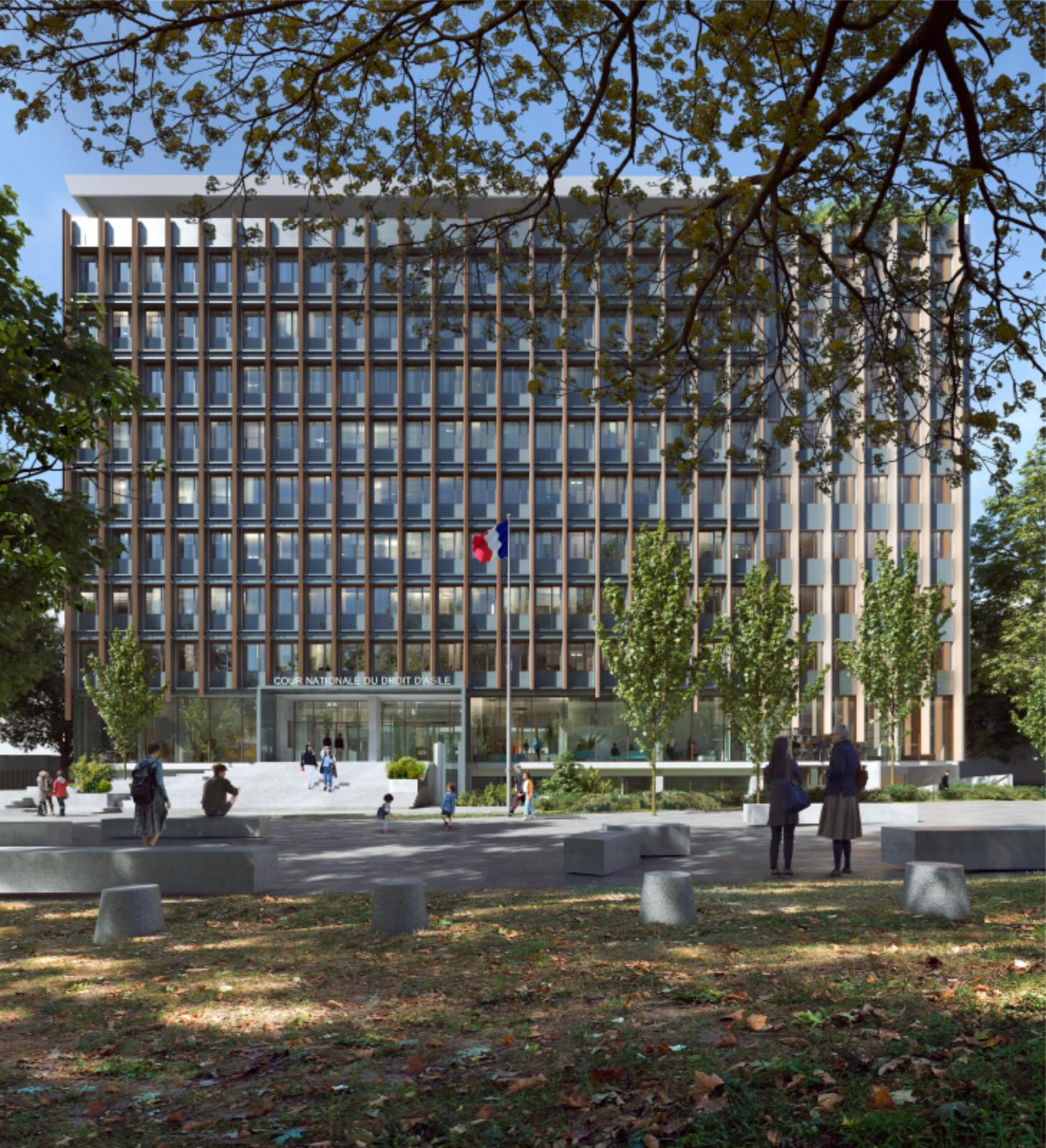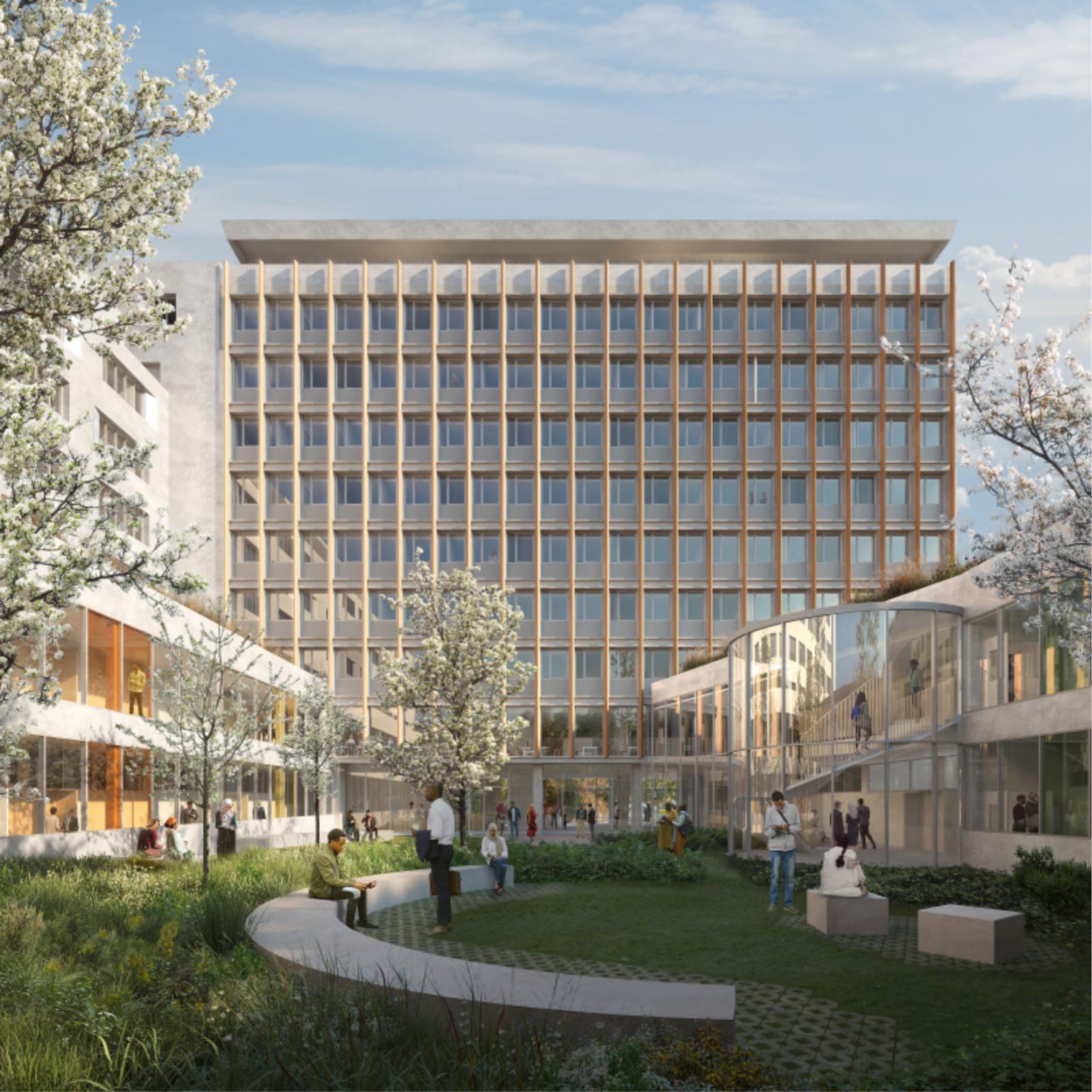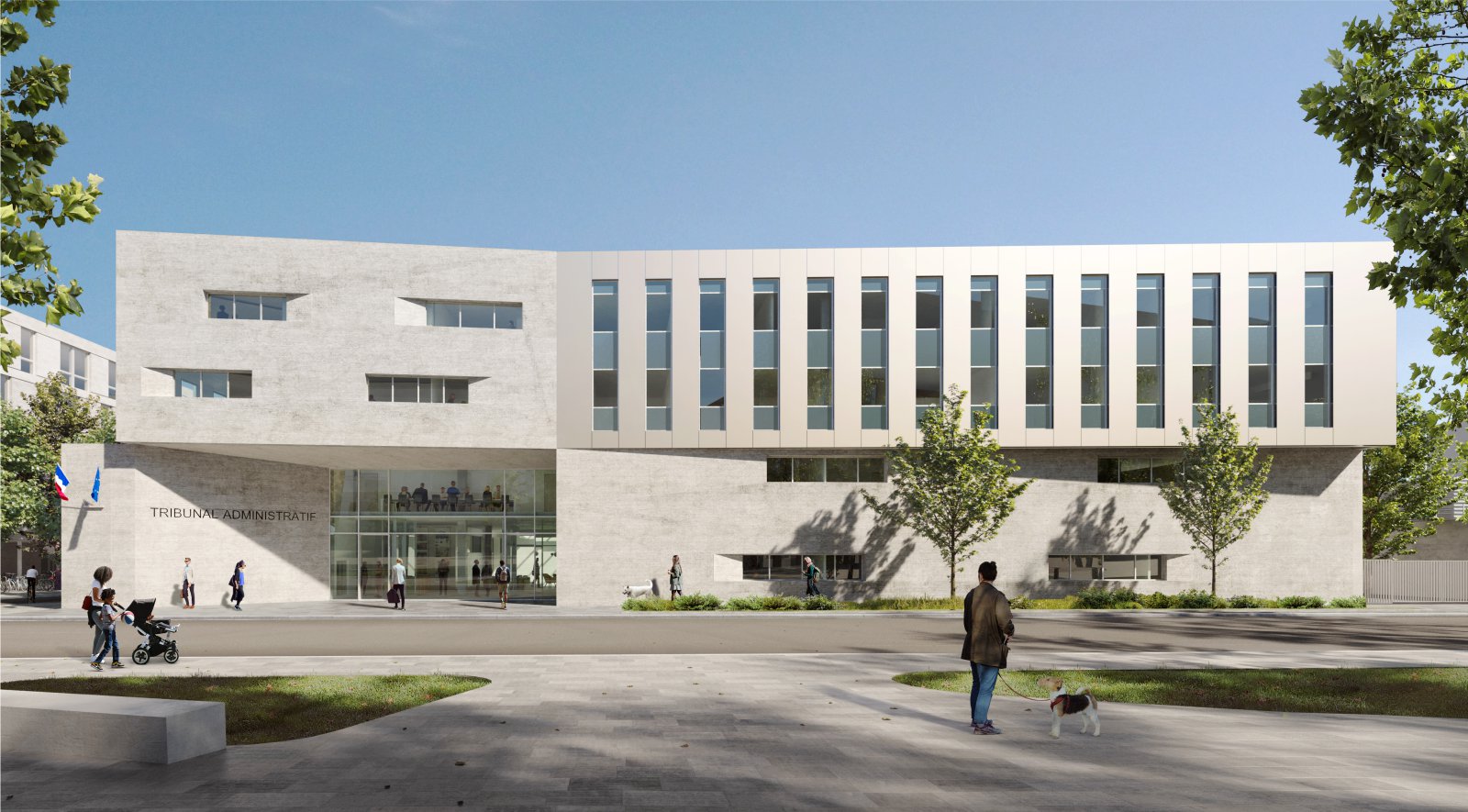The proposal collects the two jurisdictions on one site around large green areas to offer a place of calm during what can be a time of intense turmoil. The National Court of Asylum, or Cour nationale du droit d’asile (CNDA) in French, is a unique jurisdiction in France that judges cases for individuals who have appealed against the decision made by Office Français de Protection des Réfugiés et Apatrides (OFPRA).
This project will relocate the National Court of Asylum, which is currently spread across several buildings in Montreuil, and the Administrative Court to the same area. Collecting the two courts will allow them to share spaces, gardens and services to create more welcoming and safe conditions for visitors and for the 940 employees working across the two jurisdictions.

A place of hospitality
Snøhetta is designing the complete relocation, including buildings, landscape, wayfinding, interior, and furniture. The proposal aims for the new locations to be a symbol of justice and transparency and a place of hospitality for all its users. The project strives to provide the best possible environment for everyone involved, acknowledging the complexity dealt with by all the employees and visitors of these courts.
Messages of transparency and safety are conveyed through a sober architecture that fits into the more residential neighborhood and by opening up the lobby and waiting areas. As an extension to these shared spaces, a 700m2 generously planted garden will be accessible to visitors, offering tranquility and promoting biodiversity.

Nature as a tool to offer support
“In this project, we wanted to introduce large gardens to support people who may be in a challenging situation by providing a place of calm and relief, hopefully making their experience less stressful,” explains Snøhetta’s co-founder Kjetil Trædal Thorsen.
A growing amount of research indicates that exposure to natural environments such as parks and green urban areas positively affects mental and physical health, reducing blood pressure and distress as some of the many results.

Improving functionality and connection to urban surroundings
The project will be run by Snøhetta’s Paris studio and marks one of the first stages of an ambitious urban renewal plan for the La Noue neighborhood in Montreuil, a suburb east of Paris, which also includes building new schools and sports and residential programs.
The site hosting the two jurisdictions will be opened up and connected to its urban surroundings with a series of public walkways. To ensure an intuitive understanding and access to the two courts, regardless of language or origin, Snøhetta has designed a clear visitor flow through internal and external pathways, enhanced by universal signage and wayfinding. There will also be improved site accessibility for pedestrians, bicycles and cars.

To ensure good working environments for the employees, plenty of daylight will be provided, and secluded outdoor courtyards and gardens will be created for meetings or private breaks. Employee functions and spaces have been connected with pathways and clear separations between public and private areas. The modularity of the office floors will be made possible by a connecting pathway between the two courts and the location of vertical cores.
Therefore, the functions could be extended as the courts evolve.
To limit the distances, the buildings have been designed to be compact. The two jurisdictions will be located opposite each other, with shared programs like a nursery, a sports hall and a restaurant at the heart of the site. All these spaces will be centered around the large green heart of calm gardens.

Combining architectural heritage with new construction
The project will include a respectful rehabilitation of building from 1963, designed by Arthur Héaume and Alexandre Persitz. The facade will be renovated with vregular grids, and large glazed windows. The renovated tower will host part of the CNDA, including the main lobby, visitor reception areas on the first two floors, and a rooftop terrace with panoramic views. It will benefit from a generous forecourt and great transparency throughout.
Addressing environmental and humanistic values
In addition to promoting biodiversity through the variety of new green spaces, the project also addresses several other sustainability challenges. Solar control through the orientation of the facades and thermal control will help avoid excessive energy consumption, and the building will accommodate energy production by photovoltaic panels. A low-carbon strategy has been adopted by limiting the carbon impact of concrete and using bio-sourced materials such as wood wool insulation. Source by Snøhetta.


- Location: Montreuil, France
- Architect: Snøhetta
- Collaborators: Eiffage equipment construction, Oteis (BET) Amoes (BET), Eiffage services (operation-maintenance)
- Client: Council of State represented by the Public Agency for Justice Real Estate
- Typologies: Court buildings, public space, public gardens, workspace
- Size: 22,162m2 of floor area. 45 courtrooms, including 40 for the National Court of Asylum and 5 for the Administrative Court, and 932 workstations
- Timeline: 2023-2026
- Images: Courtesy of Snøhetta

